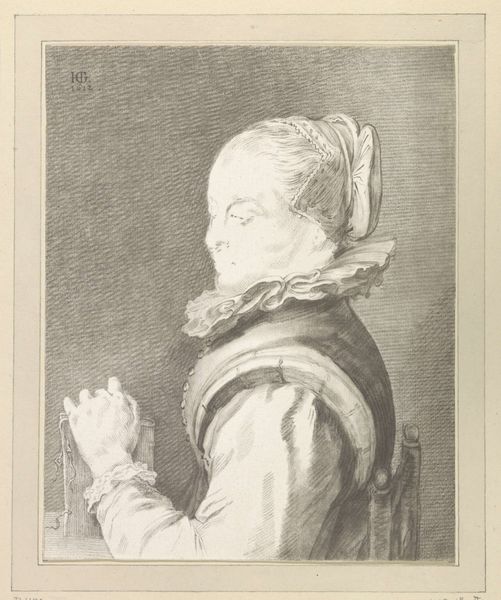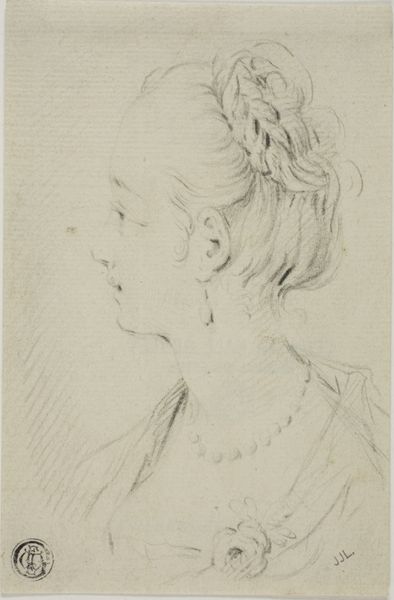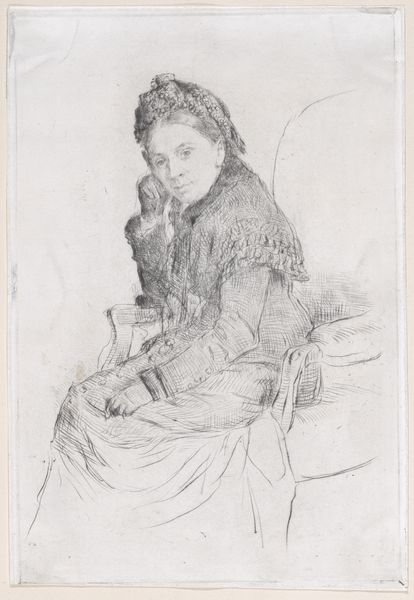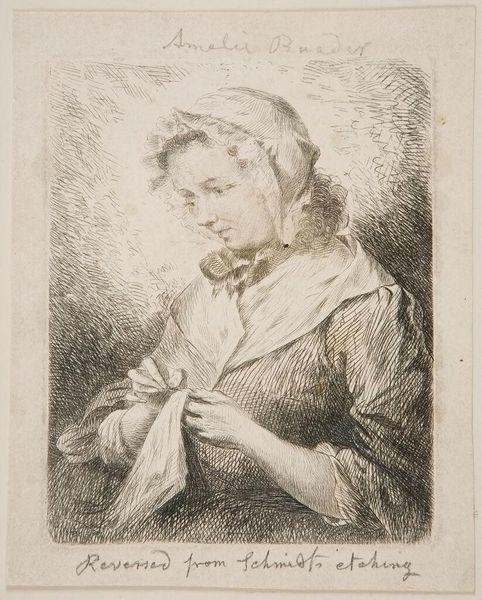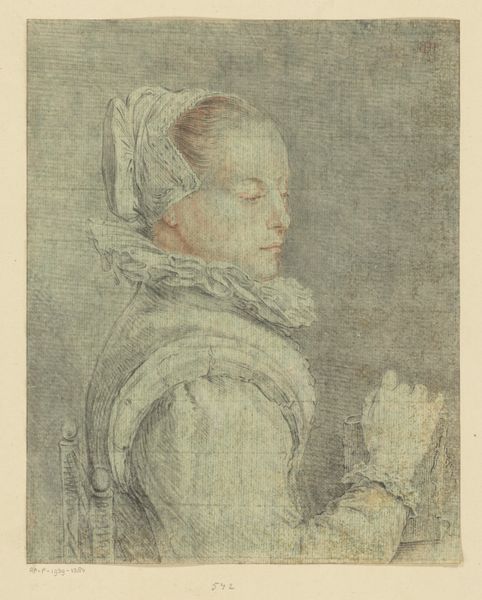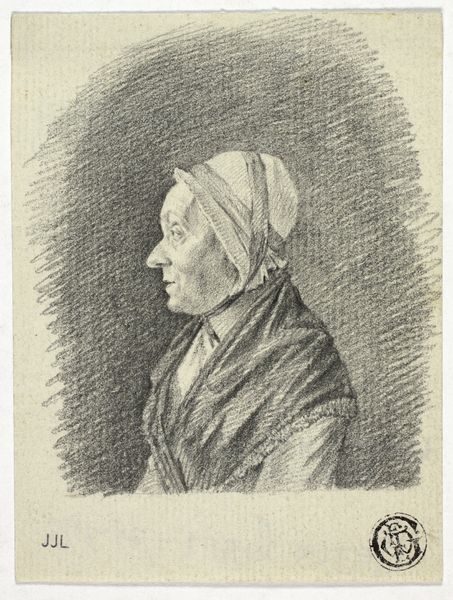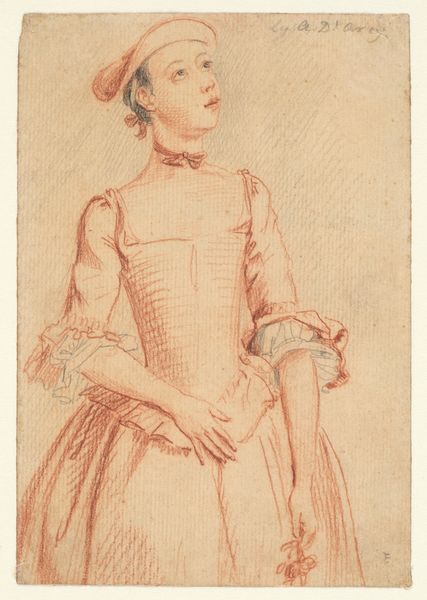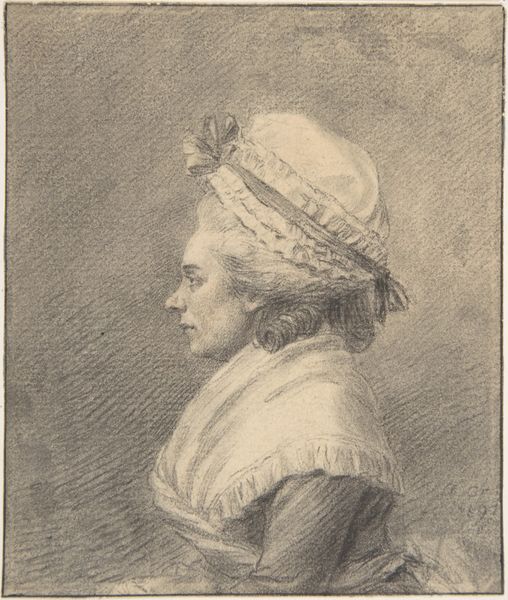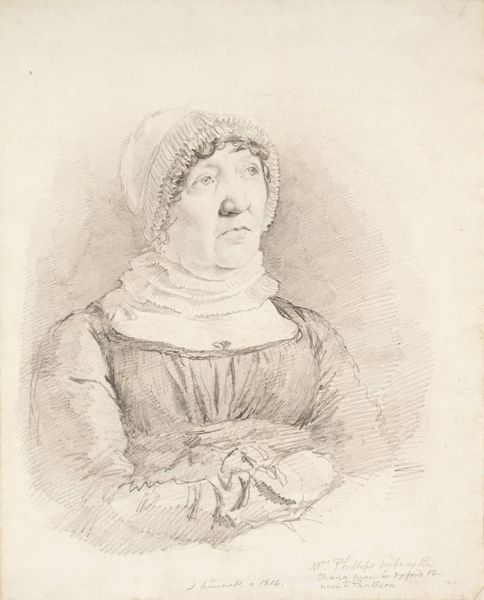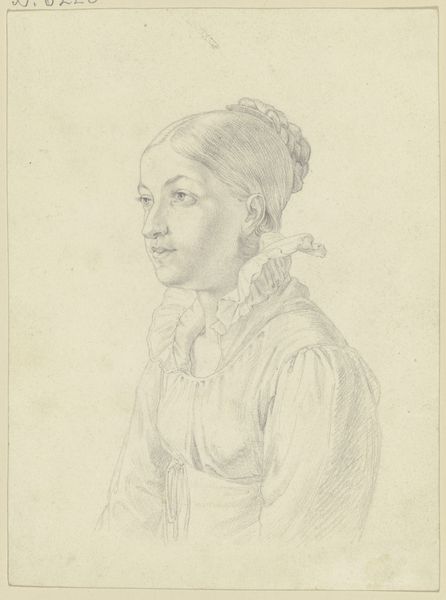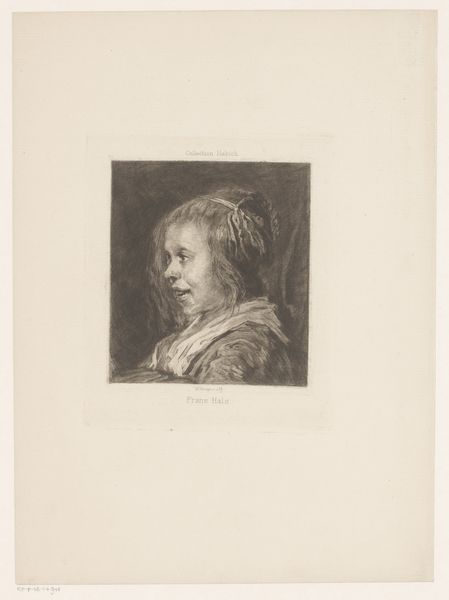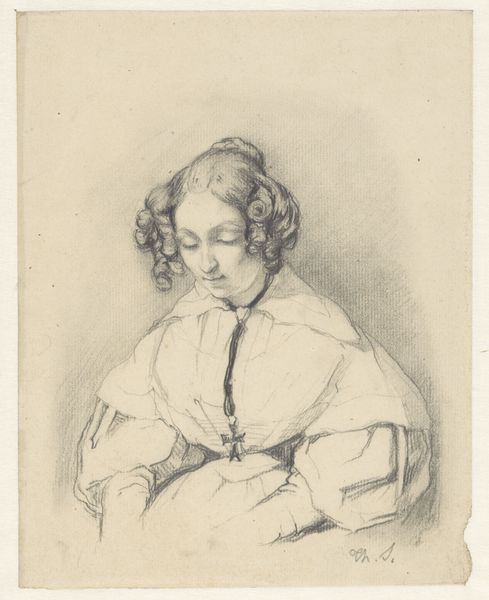
drawing, pencil
#
portrait
#
drawing
#
neoclacissism
#
charcoal drawing
#
pencil drawing
#
pencil
#
portrait drawing
#
genre-painting
Dimensions: height 261 mm, width 208 mm
Copyright: Rijks Museum: Open Domain
Curator: We are standing before Johannes Körnlein's "Portret van een jonge vrouw" from around 1770, a drawing currently housed in the Rijksmuseum. Editor: The immediate impression is one of subdued grace. Her downcast gaze and the somber background evoke a quiet introspection, almost melancholic. Curator: Körnlein’s piece exemplifies neoclassical portraiture, moving away from the flamboyant baroque towards a more reserved and supposedly "natural" style. It is executed using pencil and charcoal. The physical handling of these materials suggests precision, echoing the Neoclassical emphasis on clear form. Look at the almost industrial uniformity in his marks. Editor: Absolutely. That stark contrast, created through those careful marks, helps frame her in what seems like a very controlled symbolic context. The details are fascinating, from her ruffled collar and headdress—signifiers of her position. Curator: Exactly, clothing functioned as a significant marker of identity in the 18th century. Each piece carefully considered, consciously created, traded, and worn. The materiality speaks volumes about social expectations. Editor: Beyond social standing, the very act of holding what looks like a prayer book also symbolizes inner piety. These elements reinforce prevailing virtues expected of women. I find the closed book itself quite symbolic. Is it knowledge withheld, perhaps, or simply a devotional aid at rest? Curator: A very keen observation! I think there’s much to be said about that, especially during that historical period. This piece represents the way art actively codified those behavioral norms expected from those wearing high fashion. Editor: Reflecting on it now, Körnlein crafted not only a likeness but a reflection of society’s idealized, though also imposed, image. Curator: Agreed, and examining Körnlein's choice of materials gives insight into the means of manufacturing those social structures, wouldn’t you say?
Comments
No comments
Be the first to comment and join the conversation on the ultimate creative platform.
